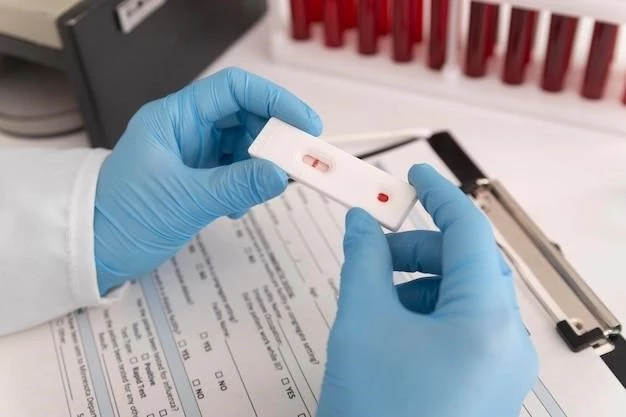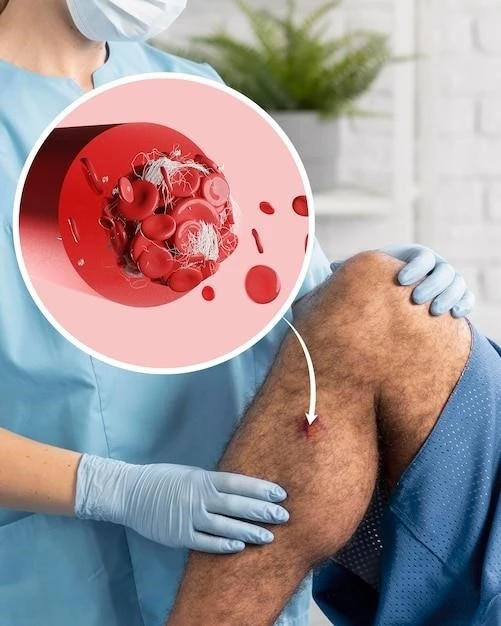Understanding Cryoglobulinemia

Cryoglobulinemia has various causes‚ including autoimmune disorders‚ infections‚ and certain cancers.
Causes of Cryoglobulinemia
Cryoglobulinemia can be caused by underlying conditions such as hepatitis C‚ autoimmune disorders‚ and certain cancers. In some cases‚ it can also be triggered by infections or drug reactions. The abnormal protein complex formed in cryoglobulinemia can lead to blockages in blood vessels‚ causing inflammation and tissue damage. Understanding the root cause of cryoglobulinemia is crucial in developing an effective treatment plan and managing the condition.
Symptoms and Diagnosis of Cryoglobulinemia
The symptoms of cryoglobulinemia can vary widely‚ including skin rashes‚ joint pain‚ weakness‚ and organ involvement. Diagnosis involves blood tests to detect the presence of cryoglobulins and underlying conditions. Other diagnostic procedures such as imaging tests and tissue biopsies may be performed to assess the extent of organ damage. Early diagnosis is essential for timely intervention and management of cryoglobulinemia symptoms.
Treatment Options for Cryoglobulinemia
Treatment of cryoglobulinemia focuses on addressing the underlying cause‚ managing symptoms‚ and preventing complications. Depending on the severity of the condition‚ treatment may include medications such as corticosteroids‚ immunosuppressants‚ and antiviral drugs. In severe cases‚ procedures like plasmapheresis may be recommended to remove cryoglobulins from the blood. Close monitoring by healthcare providers is essential to adjust treatment plans as needed and improve the quality of life for individuals living with cryoglobulinemia.
Management of Cryoglobulinemia Flares
Managing flares of cryoglobulinemia involves a combination of medication adjustments‚ lifestyle changes‚ and supportive care. During a flare-up‚ rest‚ applying warm compresses to affected areas‚ and staying hydrated can help alleviate symptoms. Medications such as pain relievers‚ anti-inflammatory drugs‚ and immunosuppressants may be prescribed to manage flare symptoms and reduce inflammation. In severe cases‚ hospitalization and more intensive treatments may be required to control flares and prevent complications. Developing a personalized management plan with healthcare providers is essential for effectively handling cryoglobulinemia flares.
Cryoglobulinemia and its Link to Hepatitis C
Hepatitis C infection is a common cause of secondary cryoglobulinemia. The virus triggers the production of abnormal proteins that can form cryoglobulins‚ leading to systemic inflammation. Detecting and treating hepatitis C is crucial in managing cryoglobulinemia associated with this infection. Antiviral medications are often prescribed to control hepatitis C and reduce the production of cryoglobulins. Close monitoring and collaboration between specialists are essential in treating both conditions to prevent complications and improve outcomes for patients.
Prognosis and Outlook for Cryoglobulinemia Patients
The prognosis for individuals with cryoglobulinemia varies depending on the underlying cause‚ severity of symptoms‚ and response to treatment. Early diagnosis and appropriate management strategies can help improve outcomes and quality of life. While some cases of cryoglobulinemia may be mild and manageable‚ others can be more severe and lead to complications such as organ damage. Regular follow-ups with healthcare providers‚ adherence to treatment plans‚ and lifestyle modifications can positively impact the prognosis for cryoglobulinemia patients. Continued research and advancement in treatment options offer hope for better outcomes in the future.
Lifestyle Tips for Living with Cryoglobulinemia
Managing cryoglobulinemia involves incorporating lifestyle changes to support overall health and well-being. It is essential for individuals with cryoglobulinemia to maintain a balanced diet‚ engage in regular physical activity‚ avoid exposure to cold temperatures‚ and manage stress effectively. Quitting smoking and limiting alcohol intake can also help reduce inflammation and improve circulation. Regular communication with healthcare providers‚ staying informed about the condition‚ and seeking support from loved ones can make living with cryoglobulinemia more manageable. By prioritizing self-care and making healthy choices‚ individuals can enhance their quality of life while managing the challenges of cryoglobulinemia.
Research Developments in Cryoglobulinemia Treatment
Ongoing research in cryoglobulinemia aims to explore new treatment options‚ improve existing therapies‚ and enhance patient outcomes. Scientists are investigating targeted therapies‚ novel immunomodulatory drugs‚ and personalized medicine approaches to address the underlying mechanisms of cryoglobulinemia. Clinical trials are exploring the efficacy and safety of experimental treatments in managing the condition and reducing symptoms. Advances in understanding the pathogenesis of cryoglobulinemia are driving innovative research efforts to develop more effective and tolerable therapies. Stay informed about the latest developments in cryoglobulinemia treatment to access cutting-edge options and potentially improve your quality of life as a patient.
